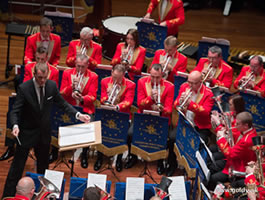The past few decades have been kind to lovers of early music. The Sixteen keep unearthing buried British treasure, the Tallis Scholars keep churning out superb recordings, and Chanticleer keeps coming soon to a cathedral (or maybe an auditorium) near you. The newest contribution to this renaissance of the Renaissance comes from the Concentus Carolina Choral Ensemble, which recently made its debut at Church of the Holy Family in Chapel Hill.
Its program, called “Emergence, Death and Resurrection: A Concert of Meditations,” unfolded in three sections: a short presentiment, part one around the theme of death, and part two around the theme of new life. Apart from this thematic difference, the two main parts mirrored each other rather closely. Both drew from standard Renaissance and Baroque repertoire, focusing heavily on familiar names like Byrd, Gibbons, and Purcell. In each part, too, Paul Harris (of Holy Trinity Anglican Church) was given an opportunity to display his solo skills at the organ. The most interesting aspect of each part, however, was the prominence of duet, trio, and quartet singing, which prompted multiple different standing formations for the ensemble.
After singing the first three movements in a linear formation, the nine singers clustered together for Purcell’s Funeral Mass for Queen Mary. One person behind me mumbled, “hmm, this is interesting….” Presumably the goal here was to foreground the quartet, but it had another, perhaps unintended, effect. Standing in a line, individual voices stuck out; clustered together, voices melded together and a more concentrated sound resulted.
Indeed, the ensemble singing was inconsistent throughout the program. At times, you could close your eyes and believe – for a second or two – that you had just bought an expensive ticket to hear one of the well-known groups mentioned above. The final bars of Byrd’s “Christ Rising Again,” for example, were tuned so well and flowed so effortlessly that a number of audience members (myself included) gasped at its conclusion. And yet at other times, you were reminded that this was a free concert given by a green ensemble. The balance was occasionally off, rhythms didn’t always synch, and some phrases seemed shaped more to individual preference than communal consensus – all understandable issues for an ensemble making its first public appearance. Conductor Seth Garrepy (a composer and choral person whose websites need attention) trained his group well, but togetherness takes time and experience.
The bigger problem was exposed in the small group sections, where gaps in vocal ability became clear for all to hear. Sopranos Laura Dawalt and Samantha Arten sang like real baroque soloists, doing justice to difficult pieces like Purcell’s “O dive custos.” But altos Stacey Garrepy and Molly Barnes sang like ensemble members singing solos, unable to produce enough sound to grab the listener. Bass Bradley Croushorn and tenor Joseph Ittoop fell somewhere in between, not really having opportunities to shine but still singing intelligently and sensitively when called upon. I suspect that the balance issues noted above will not be solved until the talent gap between sopranos and altos is narrowed.
I’m not sure if the members of Concentus have aspirations to become a professional choir, or if they intend to remain gifted amateurs. Their singing was certainly worth paying for. With that said, a paying audience would have found Concentus’ “trumpet situation” entirely unprofessional. After an intermission extended by ten minutes for “traffic problems,” Garrepy notified the audience thirty minutes later that the trumpet players were still in traffic, and that audience members would have to wait another ten minutes… for one final piece. Several people left. I stayed, but it was hardly worth the wait. It’s hard to latch onto a Jubilate Deo when all the concert’s momentum has stalled.











